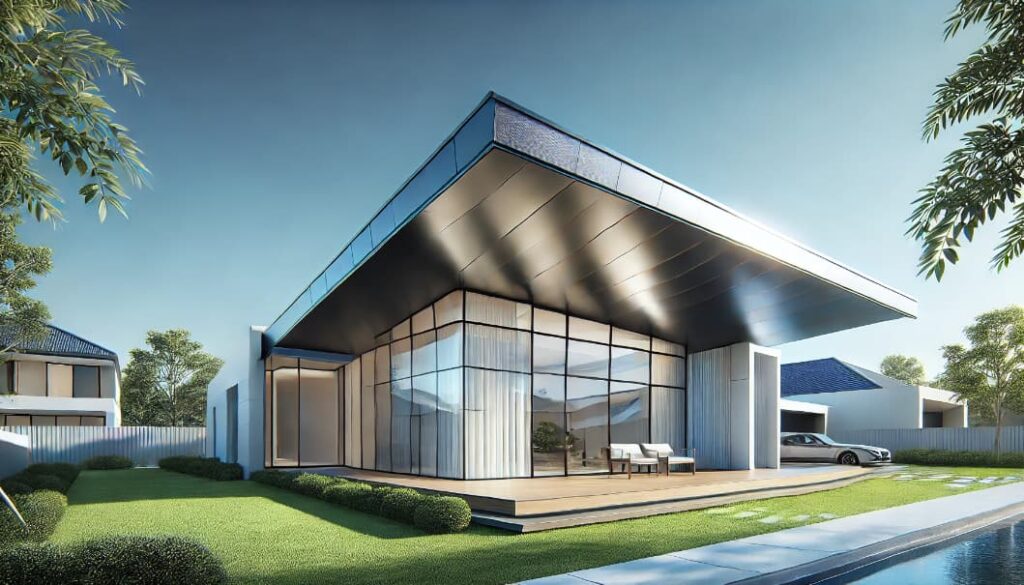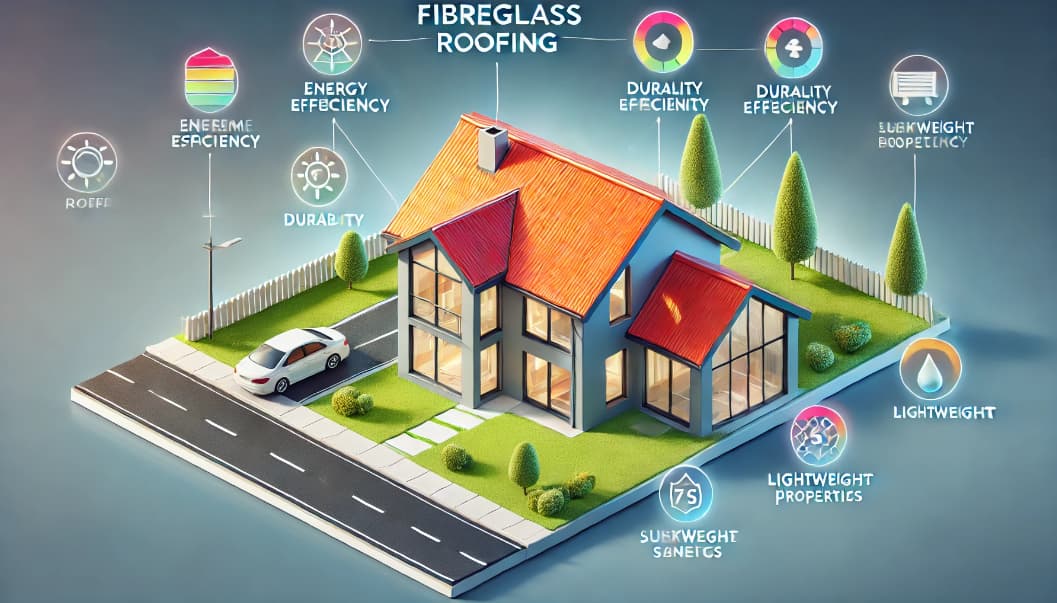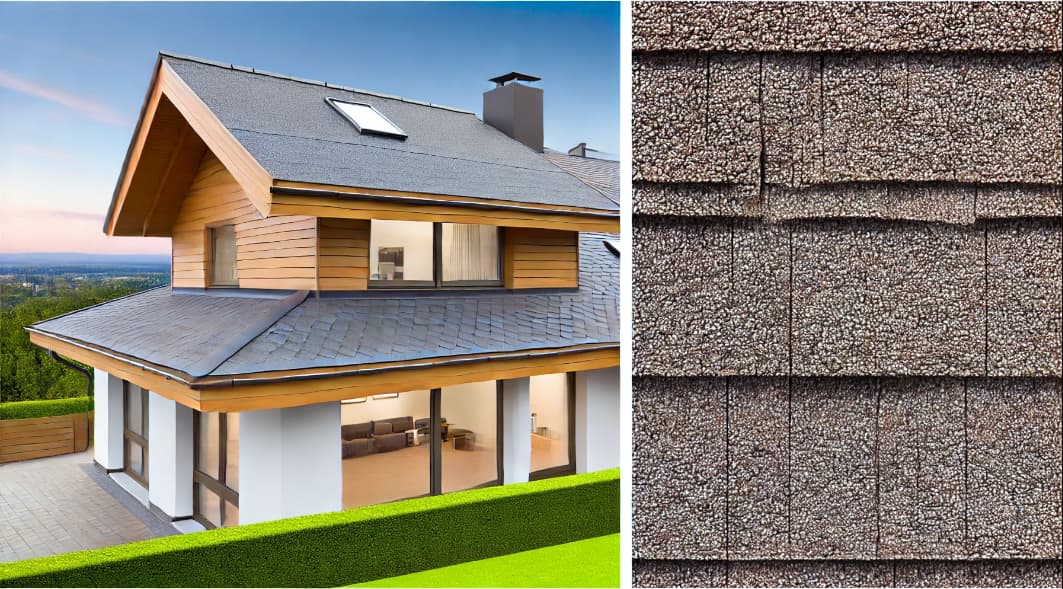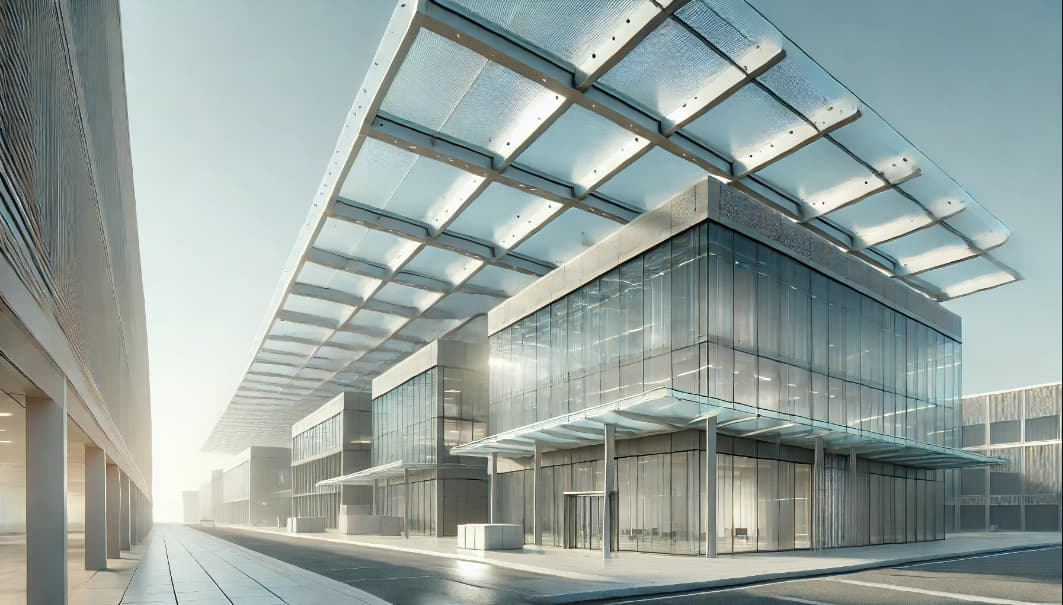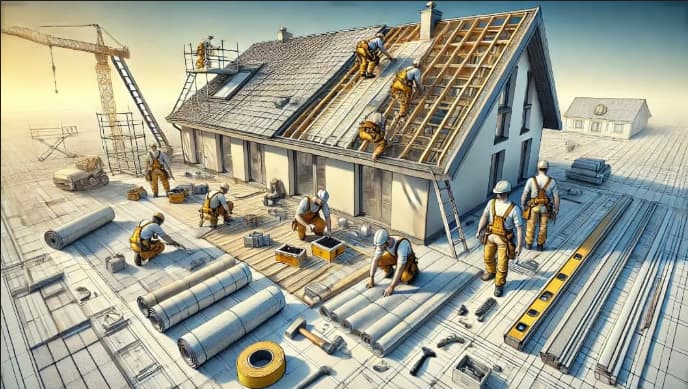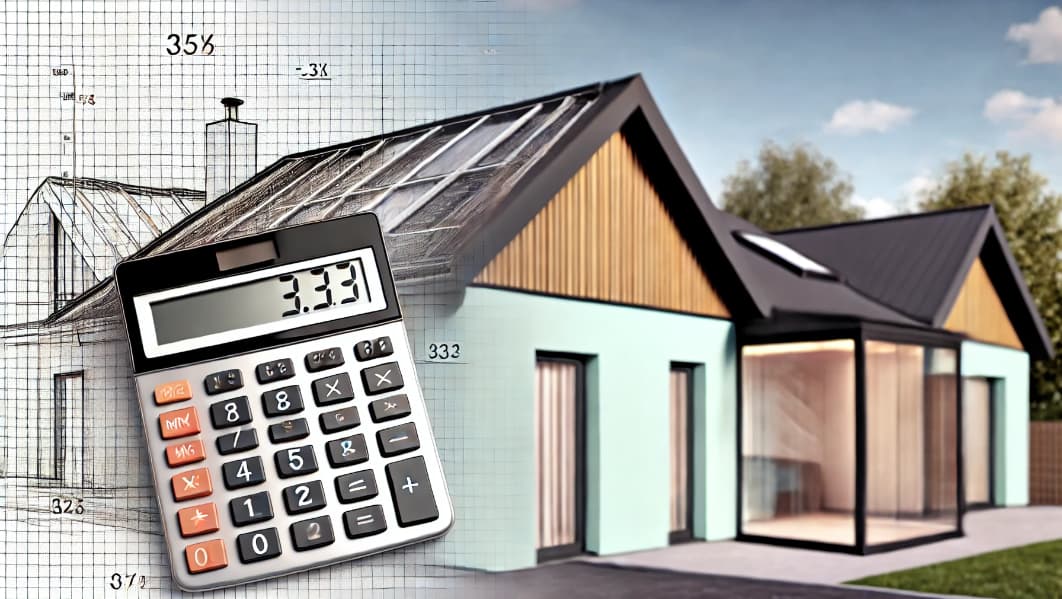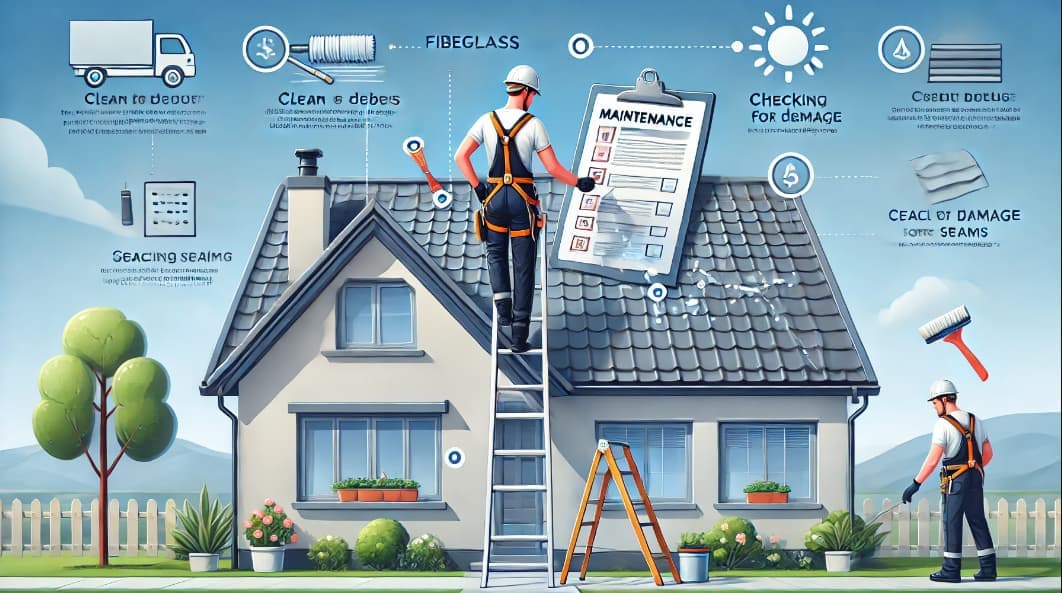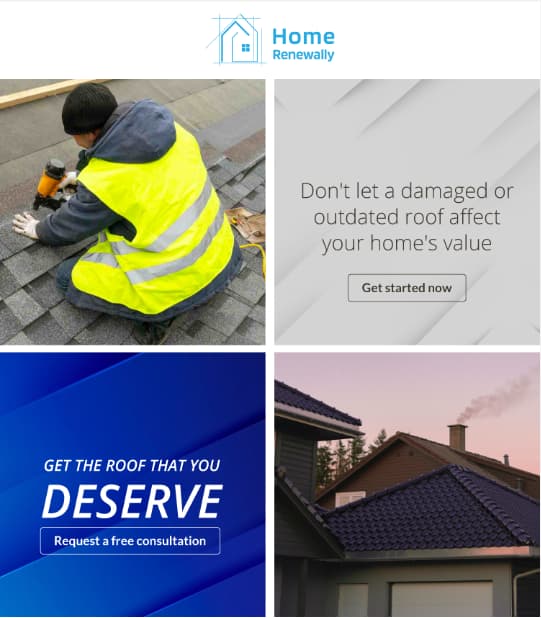Roofing
Fibreglass Roofing: Unlocking Durability and Style
Fibreglass roofing, also known as GRP (Glass Reinforced Polyester), is a versatile and durable roofing solution. It is particularly popular for flat roof applications in both residential and commercial buildings.
The material combines resin with fine glass fibers, resulting in a robust and lightweight composite.
Fibreglass roofing offers several advantages over traditional materials like felt. It boasts a longer lifespan, typically lasting over 20 years with minimal maintenance.
Its seamless and waterproof nature makes it ideal for preventing leaks, a common issue in flat roofs.
Additionally, fibreglass roofing is fire-resistant and can withstand extreme weather conditions without deteriorating.
The installation process for fibreglass roofing is straightforward but requires precision. It starts with a clean, dry roof deck, preferably made of OSB3 or similar materials.
A catalyzed resin layer is applied first, followed by a sheet of fibreglass matting. Another layer of catalyzed resin is then applied to complete the system.
The result is a strong, waterproof surface that adheres perfectly to the roof deck.
Fibreglass roofing is not only functional but also aesthetically pleasing. The final topcoat comes in various colors, with dark grey being the most popular.
This allows homeowners and businesses to choose a look that complements their building’s design while enjoying the benefits of a high-performance roofing system. Explore more about fibreglass roofing options here.
2. Advantages of Fibreglass Roofing
Convenience
Fibreglass roofing is highly convenient due to its lightweight nature and ease of installation. It can be pre-cut at the manufacturing site, reducing waste and making transportation easier.
The smooth surface of fibreglass means it requires fewer materials for installation, making it an environmentally friendly option.
Maintenance Ease
One of the standout benefits of fibreglass roofing is its low maintenance requirements. Its smooth surface significantly reduces the likelihood of environmental erosion and water damage.
Routine inspections and occasional cleaning are typically all that’s needed to keep the roof in excellent condition.
Longevity and Durability
Fibreglass roofs are known for their durability and long lifespan. They can last up to 20 years, which is significantly longer than traditional felt roofs that typically last 6 to 8 years.
This longevity makes fibreglass roofing a cost-effective investment for both residential and commercial properties.
Safety
Safety is a crucial factor when choosing roofing materials. Fibreglass roofing is fire-retardant and corrosion-resistant, providing a safe environment for occupants.
The laminated resins used in fibreglass roofing offer an added layer of protection against fire and other potential hazards. Discover durable and safe fibreglass roofing solutions here.
3. Fibreglass Shingles: A Popular Choice
Fibreglass shingles are a type of asphalt shingle with a woven fibreglass mat coated with asphalt and ceramic granules.
They are lightweight, fire-resistant, and not prone to warping, making them an excellent base for roofing material. Here are their main benefits:
Aesthetics
Fibreglass shingles are available in many colors and styles, ensuring they fit any neighborhood’s look. They can even be made to mimic wood or slate.
Affordability
Fibreglass asphalt shingles have the lowest up-front costs among sloped roof materials. Their cost-effectiveness makes them a popular choice.
Ease of Installation
Fibreglass shingles are easy to handle, cut, and install. Most licensed roofing contractors have extensive experience working with them.
Fire Resistance
Fibreglass shingles have a Class A fire rating, making them suitable for areas prone to wildfires.
Low Maintenance Needs
Once installed, fibreglass shingles require very little specific care, unlike wood or slate shingles. Learn more about fibreglass shingles and find the best options.
4. Fibreglass Roof Panels: Types and Benefits
Fibreglass roof panels, also known as FRP, are lightweight, translucent panels primarily used to allow more light into a structure.
They are made of strong polyester resin reinforced with fibreglass. Here are the types and benefits:
Types of Corrugated Fibreglass Roof Panels
- ⅞” Corrugated
- ½” Corrugated
- R Panel
- 7.2 Panel
- AG Panel
Benefits of FRP Panels
Better Indoor Lighting
Fibreglass panels are translucent, allowing natural light to brighten up spaces, reducing the need for artificial lighting.
Heat Absorption
Fibreglass panels absorb more heat, beneficial in colder climates, reducing the need for heating.
Durability
FRP panels can withstand a wider temperature range without warping, cracking, or excessive expansion and contraction.
Corrosion Resistance
Fibreglass panels are suitable for highly corrosive environments and do not rust like steel roof panels. Get your fibreglass roof panels today.
5. Installation Process
The installation of fibreglass roofing involves several key steps:
Preparation
The first step in installing a GRP roof is to prepare the decking. Remove all unwanted materials and ensure the joists are clear and clean.
The deck should be free of moisture and completely dry to guarantee proper installation.
Roof Lamination
This step involves applying a correct proportion of resin mixtures, mat, and board to cover all corners. A proper ratio of resin to glass is essential, typically two-thirds glass and one-third resin.
This ratio provides a resin-coated deck and a transparent laminate finish.
The process begins with applying a catalyzed resin layer, followed by placing the fibreglass matting. Another layer of catalyzed resin is then applied to complete the system.
This ensures a strong, waterproof surface that adheres perfectly to the roof deck.
Example:
Imagine preparing your roof deck by removing all debris and ensuring it’s dry. You then mix the resin and apply it evenly, place the fibreglass matting, and cover it with another layer of resin.
The result is a smooth, durable surface ready to withstand various weather conditions.
Final Application
Allow the laminate to dry and cure. Add the catalyst mixture in the required amount and apply it thinly to avoid cracks. The catalyst ratio is usually found on the container of the roof supplies kit.
Safety Considerations
Always follow safety protocols during installation. Use protective gear and ensure the workspace is well-ventilated. Find professional installation services here.
6. Cost of Fibreglass Roofing
The cost of fibreglass roofing can vary significantly based on several factors, including the type of fibreglass product, installation complexity, and regional pricing differences.
Here, we delve deeper into understanding the costs associated with fibreglass roofing.
Material Costs
- The material cost for fibreglass roofing varies depending on the type of fibreglass product used. Here is a breakdown of the typical costs:
Fibreglass Shingles:
- Basic three-tab: $80–$130 per square (100 square feet)
- Architectural: $100–$250 per square
- Premium/luxury: $150–$280 per square
Fibreglass Roof Panels:
- Generally range from $2.00 to $3.00 per square foot.
- These prices reflect the material costs alone. Additional costs will be incurred for underlayment, fasteners, and other roofing accessories.
Installation Costs
- Installation costs can vary widely based on the complexity of the roof design and local labor rates. On average, here are the installation costs per square for different types of fibreglass roofing:
Fibreglass Shingles:
- Basic three-tab: $200–$500
- Architectural: $400–$600
- Premium/luxury: $500–$700
Fibreglass Roof Panels:
- Installation typically costs around $3.00 to $6.00 per square foot. Find competitive installation quotes here.
Total Cost Estimate
- To provide a comprehensive cost overview, here is an example of the total cost estimate for a 2,000 square foot roof:
| Shingle Type | Material Cost | Installed Cost | Total Cost |
| Basic three-tab | $1,600–$2,600 | $4,000–$10,000 | $5,600–$12,600 |
| Architectural | $2,000–$5,000 | $8,000–$12,000 | $10,000–$17,000 |
| Premium/luxury | $3,000–$5,600 | $10,000–$14,000 | $13,000–$19,600 |
For fibreglass roof panels on the same roof:
| Panel Type | Material Cost | Installed Cost | Total Cost |
| Fibreglass Panels | $4,000–$6,000 | $6,000–$12,000 | $10,000–$18,000 |
These estimates include all necessary materials and labor. However, additional costs may be incurred for roof deck repairs, permits, and waste disposal.
Cost Comparison
Here’s how fibreglass roofing compares to other popular roofing materials:
| Roofing Material | Average Cost per Square Foot |
| Fibreglass Shingles | $2.80–$7.00 |
| Asphalt Shingles | $3.50–$5.50 |
| Metal Roofing | $5.50–$12.00 |
| Slate Roofing | $10.00–$20.00 |
| Tile Roofing | $8.00–$15.00 |
Fibreglass shingles and panels are among the more affordable roofing options, especially when considering their longevity and low maintenance requirements. Explore cost-effective fibreglass roofing solutions here.
7: Maintenance Tips
Maintaining fibreglass roofing is essential to ensure its longevity and optimal performance.
Although fibreglass roofs are known for their durability and low maintenance needs, regular care can prevent minor issues from becoming major problems.
Here are some detailed tips to help you maintain your fibreglass roof effectively:
Regular Inspections
- Annual Professional Inspections
It’s recommended to have your fibreglass roof inspected by a professional at least once a year.
A roofing expert can identify potential issues such as cracks, punctures, or delamination that may not be visible to the untrained eye.
Visual Inspections After Severe Weather
After severe weather events, such as storms or heavy snowfall, conduct a visual inspection of your roof.
Look for any visible damage, including missing or cracked shingles, loose or lifted edges, and accumulation of debris.
Cleaning the Roof
- Gentle Cleaning Techniques
To maintain the appearance and functionality of your fibreglass roof, clean it periodically. Use a soft-bristle brush or a low-pressure garden hose to remove dirt, leaves, and other debris.
Avoid using high-pressure washers, as they can damage the surface of the fibreglass.
Algae and Moss Prevention
In humid climates, algae and moss growth can be a concern. To prevent this, install a zinc or copper strip near the roof peak.
As rainwater washes over the strip, it releases ions that inhibit algae and moss growth.
Addressing Minor Repairs
- Sealing Cracks and Punctures
Small cracks or punctures can occur over time. These should be addressed promptly to prevent water infiltration.
Use a high-quality fibreglass patching kit to seal any minor damage. Follow the manufacturer’s instructions for best results.
Reinforcing Weak Areas
If you notice any areas where the fibreglass appears thin or worn, reinforce them with an additional layer of resin and matting.
This can help maintain the roof’s integrity and prevent future issues.
Gutter and Downspout Maintenance
- Clearing Debris
It is important to routinely maintain your gutters and downspouts to guarantee efficient water flow. Blocked gutters may result in water accumulation on the roof, leading to potential long-term damage.
Remove leaves, twigs, and other debris to keep the water flowing smoothly.
Checking for Leaks
Inspect the seams and joints of your gutters and downspouts for any signs of leaks. Apply a waterproof sealant to any areas that appear to be compromised.
This will prevent water from seeping into the roofing structure.
Seasonal Maintenance
- Spring and Fall Preparation
Prepare your roof for the changing seasons by performing specific maintenance tasks in the spring and fall.
In the spring, check for any damage caused by winter weather and clean the roof thoroughly. In the fall, clear away fallen leaves and ensure the gutters are free of obstructions.
Winter Care
During the winter, avoid allowing heavy snow to accumulate on your fibreglass roof. Use a roof rake to gently remove excess snow, being careful not to damage the surface.
This will prevent ice dams and excessive weight that could strain the roofing structure.
Long-Term Care
- Reapplying Protective Coatings
Over time, the protective topcoat on your fibreglass roof may wear down. To maintain its waterproof properties, consider reapplying a UV-resistant topcoat every few years.
This will help protect the roof from sun damage and extend its lifespan.
Monitoring Roof Penetrations
Pay special attention to areas where the roof has penetrations, such as around skylights, vents, and chimneys.
Ensure that the flashing around these penetrations remains intact and watertight. Replace or repair any damaged flashing as needed.
Professional Maintenance Services
- Scheduled Maintenance Plans
Consider enrolling in a scheduled maintenance plan with a professional roofing company. These plans typically include regular inspections, cleaning, and minor repairs, ensuring your fibreglass roof remains in excellent condition year-round.
Emergency Repair Services
In case of unexpected damage, such as from a fallen tree branch or severe storm, having access to emergency repair services is crucial.
Establish a relationship with a reputable roofing contractor who can provide prompt assistance when needed. Explore professional maintenance services and get a free quote here.
By following these maintenance tips, you can ensure that your fibreglass roof remains in optimal condition for many years. Regular care and attention will help you avoid costly repairs and extend the life of your roof.
Are you ready to implement these maintenance practices for your fibreglass roof? Learn more and get started today.
Conclusion
Choosing fibreglass roofing for your home or commercial building is a smart investment. Its durability, low maintenance, and safety features make it a superior choice. The wide range of options ensures you can find the perfect fit for your needs.
Are you ready to upgrade to fibreglass roofing? Learn more and get started today.
Recent Posts
- Roof Replacement Essentials: Protect Your Home
- Metal Roofing Types and Colors: Explore Top Styles & Trends
- Residential Metal Roofing Types: Explore Top Choices
- Commercial Metal Roofing Types: A Comprehensive Guide

